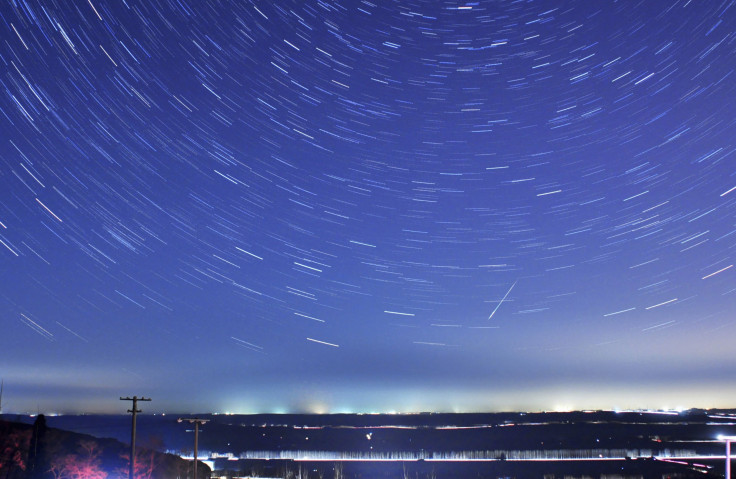Quadrantid Meteor Shower 2015: Where To Watch The First Shooting Stars Of The Year

The Quadrantid meteor shower will be lighting up skies in the Northern Hemisphere this weekend with the first shooting stars of 2015 -- but catching a glimpse could be tricky.
Conditions aren't ideal for the Quadrantids this weekend, but you won't see any meteors unless you head outside, http://t.co/PGy88nUcop
- Astronomy Magazine (@AstronomyMag) December 31, 2014Owing its moniker to a constellation that no longer exists, this event is notorious among stargazers for being short-lived but exciting. Its peak time lasts just a few hours, but during that time viewers can anticipate seeing as many as 80 meteor per hour, according to NASA.
This year, the shower can be best viewed in the Northern Hemisphere between Saturday at 9 p.m. EST and Sunday at dawn, the International Meteor Organization predicted. The radiant point, the area where the meteors appear to originate, will likely be highest in the sky Sunday just before dawn, which will be the best time for viewers in Eastern Europe and northwestern Asia to catch a glimpse. Stargazers in the central and southwestern U.S. should also have a good view, but those in the eastern half of the country could have trouble because of heavy cloud cover, the Washington Post reported. The meteors will likely appear in the northeast, just under the Big Dipper.
Watch for Quadrantid meteors Saturday and Sunday before dawn! http://t.co/8QdAXu5owQ Photo: Tommy Eliassen pic.twitter.com/dcHusriOZB
— EarthSky (@earthskyscience) January 2, 2015Meteor showers are typically named for the constellations where they appear to originate. According to NASA, the Quadrantid shower derives its name from the Quadrans Muralis constellation, first identified by the French astronomer Jerome Lalande in 1795. However, astronomers later decided to incorporate the stars into a nearby constellation called Bootes in 1922, as reported by Space.com.
Don't miss the Quadrantids - the first shooting stars of 2015: http://t.co/hXsjKAJnaZ pic.twitter.com/3w1VwBMWBv
- Astronomy Now (@AstronomyNow) January 2, 2015The first Quadrantid shower was seen in 1825: It has been the initial stargazing event every year since then. But this time around a very bright moon will make it especially tricky to see the meteors, which means the shooting stars will be brightest just before dawn, when the moon sets.
“To view the Quadrantids, find an area well away from city or street lights,” NASA advised. “Lay flat on your back with your feet facing northeast and look up, taking in as much of the sky as possible. In less than 30 minutes in the dark, your eyes will adapt and you will begin to see meteors.”
If that doesn’t sound appealing, the Slooh Community Observatory will be showing a live stream of the event online.
© Copyright IBTimes 2024. All rights reserved.






















